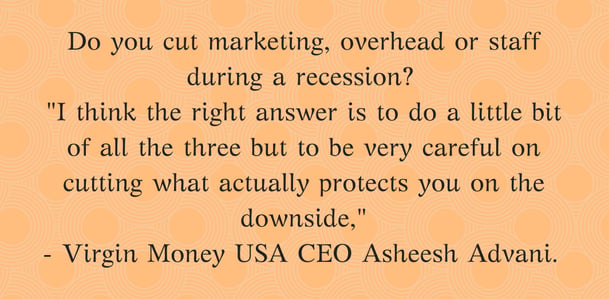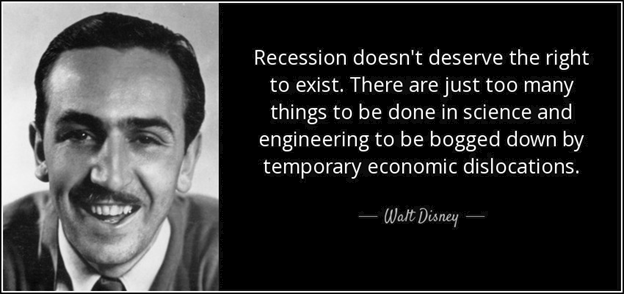Insightful and thought leadership is among the most powerful assets a CMO can possess….more so during a recession!
Chief Marketing Officers (CMO) are not CEOs or the CFOs of a company. Therefore, it’s not surprising if they can’t relate to factors such as the share price and GDP. Nevertheless, CMOs are the mirrors that reflect the feelings and expectations of your customers. No one else probably knows your customers better than the CMOs.
These are the most challenging times for any CMO. Global markets are in chaos, COVID-19, recession, stock market crash! The economy seems to be taking a steep plunge downwards.
The economic fallout could include recessions in the U.S., the euro-area, and Japan, the slowest growth on record in China, and a total of $2.7 trillion in lost output—equivalent to the entire GDP of the U.K.
In such a challenging situation, what’s expected of a CMO?
Here are 5 important actions for CMOs to Rise as True Leaders During A Recession:
1. Put the core customers at the heart of marketing
Your core customers and best-selling products will now determine how well you perform during a recession. It is of utmost importance to keep a tab on your core customers.
“If you work just for money, you’ll never make it, but if you love what you’re doing and you always put the customer first, success will be yours.” – Ray Kroc.
And we are all aware that Raymond Albert Kroc is the man behind the fast-food chain, McDonald’s, that has seen massive success during good times as well as bad times.
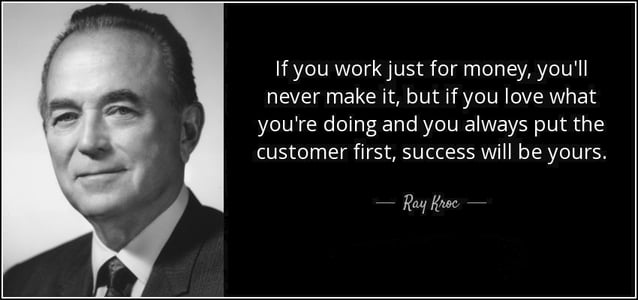
In simple terms, it means that when a business puts the expectations and requirements of a customer ahead of everything else, it is referred to as – Putting the customer first.
- Identify the needs of your consumers and strive hard to provide the best customer experience.
- Build healthy relationships with your consumers
- Acknowledge and thank your customers from time to time
Companies that pay special attention and emphasis to putting the customer ahead of everything else, and end up as heroes in the eyes of the customers.
Here is a classic case of a company that put customers first and thrived during a recession.
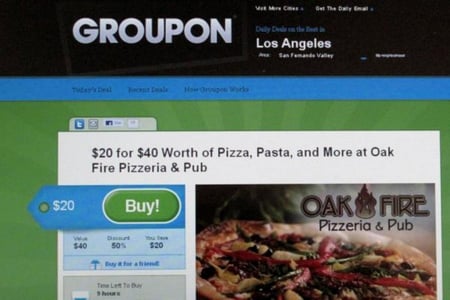
Groupon thought about putting customers first to provide consumers with Anon-essential products that they wished for during a desperate time. Thus, Groupon emerged as a recession survivor who saw better days.
2. Beef up investment in customer insights and market research
A recession is such a time when it becomes hard to argue for more investment in any field. Whereas it is the right time to get a better understanding of your target customers. It is especially important when customer needs and choices are shifting. Thus, it becomes the prime responsibility of the CMOs to ensure that they maintain a strong understanding of their customers. It becomes critical for a CMO to track and trace customer behavior.
- Are customers reassessing their buying priorities?
- Are they reallocating their budgets?
- Are they switching brands?
- Are they looking for lower prices?
For instance, after the 2009 recession, P&G released Tide Basic, a cheaper version of its successful laundry detergent. This was mainly because P&G observed in their market research that consumers started switching to cheaper brands which lead to the declining sales of Tide.
For P&G, releasing Tide Basic is considered the most daring marketing move till date.

It’s of prime importance to continue investing in market research. During a recession, or just after it winds down, consumers’ buying patterns will possibly not be the same as before. Market research helps to explore whether consumers are ready to go back to their favorite brands.
Companies might not have enough resources and expertise to run the market research all by themselves. Having an external expert agency could be the answer.
Also Read: Managing Remote Teams: 13 tips that will come handy
3. Build Brand equity – Best defense in the face of declining consumer spend
Companies that abandon or neglect their brand due to the pressure of a market downturn, will end up making matters worse.
Brands are a valuable corporate asset that can increase profitability, sales, and even share value. In consumer electronics, for instance, the price difference between branded and unbranded products is as high as 50–60 percent. No wonder branding has moved to the top of corporate strategic goals.
“Focus on building the best possible business. If you are great, people will notice and opportunities will appear.” – Mark Cuban, American entrepreneur and investor.
A Recession is a time when CMOs have to change marketing strategies and find new ways to provide brand value.
Research has proved that brands that adopted cost-effective practices not just ended up retaining their market share but went on to gain higher market share.
A recession is an opportunity for a CMO to reassess and strengthen your brand. Focus on driving the significant value – spend smarter. A recession brings the toughest decisions when a CMO has the slimmest budget. A slimmer budget pushes a CMO to become selective of effective branding efforts. Shed all such things that are excess to your brand.
When you see your competitors have started to cut back, take charge and strike. But practically your funds might not allow you to do that. But attack wisely cut back lesser than your competitors.
A Recession is a time when you need to focus and strengthen your brand position in the market.
4. Cut Costs.. Not Corners
The first thing that comes up as a solution during a recession is ‘cut costs’- both consumers and businesses come up with this idea as it’s a natural effect of lower money at your disposal.
‘Do you cut marketing, overhead or staff?’ I think the right answer is to do a little bit of all three, but to be very careful on cutting what actually protects you on the downside,” says Virgin Money USA CEO Asheesh Advani.
He very aptly says cost savings should never happen at the expense of the ability to execute a long-term vision.
During a recession or downturn, it’s important to work leaner, Nevertheless, please remember that not every money-saving measure is a good one.
When businesses start to think about tightening their budgets – the first place that everyone thinks of is the marketing budget. This is the biggest mistake anyone can do!
It’s not the time to drop marketing!!
When business slows down, it’s not wise to drastically curtail any plans of getting your name out there. It might result in fewer leads, lesser business deals and, ultimately, less revenues.
Over the years, research studies have confirmed that the best strategy in terms of long-term ROI is not to cut heavily on marketing expenditure during an economic slowdown. An analysis of the Profit Impact of Marketing Strategies (PIMS) database, presented at a March 2008 IPA conference, provides the latest evidence.
For instance, see how Office Depot and Staples reacted differently to cost-cutting during the 2000 recession.
Office Depot cut 6% of its workforce but was not able to reduce operating costs significantly. In spite of the plans to increase sales, growth fell from 19% before the recession to 8% after the recession.
In contrast, Staples took a strategic decision to close some underperforming facilities. Staples curtailed its operating costs to manage the recession effectively. As a result, its sales doubled, from $7.1 billion in 1997 to $14.6 billion in 2003.
Marketing during a recession gives you the advantage of not having as much “marketing noise”. Therefore, you don’t have to shout louder or harder for your message to be heard. However, keep the momentum going!
Keep your audience engaged. Develop a plan to come in front of your customers often. It could be a monthly activity, engaging blog posts, newsletters, emails, social media contests, and any such activity that reminds your customers that you are still there.
Your continued presence in times of COVID-19 and recession times will be interpreted as a sign of stability by your customers. Your presence shows that you have great leadership and strong attitude to survive the recession
Reducing your marketing budget invites your competitors to take advantage and fill the gap.
5. Think long. Recessions are usually short
This virus, too, shall pass. This recession, too, shall pass!
In the history of recessions, Eight out of the ten recessions have lasted under a year.
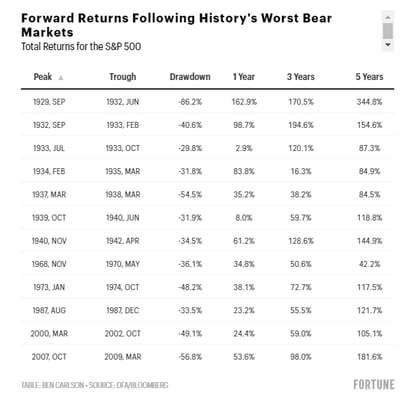
Now or later, at some point, consumers will have to come out of their homes and return to the streets. Life will return to normal when people start visiting their favorite cafes and begin doing other activities that they have been denied during these dark days.
According to the Bain report on the recession, the companies that invested carefully in research and development instead of dialing back did well after the recession. Companies should focus on realigning distribution by rebalancing locations. They should maintain a mix of current and new locations. Majority of the companies that performed well, focused heavily on improving the customer experience by studying consumer behavior.
See how a Harvard Study shows that a company with a long-term progressive focus does better when compared to other companies.
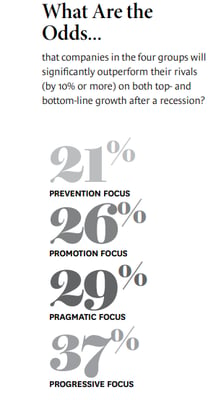
For instance, see how Samsung took a long-term approach during the recession in 2009. When most of the companies were busy cutting down on their long-term costs, Samsung doubled their R&D investment. It increased its patents in the U.S. Samsung also invested in R&D centers. Each R&D center was designed to focus on a defined product. Samsung went strong by maintaining marketing investments. Their long-term marketing strategies helped Samsung to re-brand itself as an innovative company. Very soon, in 2009, they positioned the Galaxy smartphone against big competitors like the Apple iPhone.
Knowing this reality, keeps the brand light burning! Snuffing it out during a recession will be easy, but reigniting it after the recession is going to be a gigantic effort. Therefore, it’s wise for the CMOs to maintain a long-term perspective.
Wrapping it Up!
Recession doesn’t deserve the right to exist. There are just too many things to be done in science and engineering to be bogged down by temporary economic dislocations – Walt Disney
A recession can look like the worst time to be a CMO. But it is indeed the best time to build brands. Companies that maintain a long-term strategic perspective and invest in market research will rebound stronger from the recession.
Companies that master the art of balancing between cost-cutting and investing in growing – have done well after a recession, according to research reports.
As a CMO, you have the power to either contribute to the fear or help diffuse it. Make the right choice! Focus your time and energy on things that move you forward.




